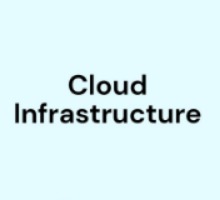Description
Introduction of Cloud Migration with GCP
Migrating to the cloud is an essential step for organizations looking to optimize their IT infrastructure, improve scalability, and reduce operational costs. Google Cloud Platform (GCP) offers a wide range of tools and services to help businesses smoothly transition from on-premises systems to the cloud. This course explores various cloud migration strategies, best practices, and GCP tools to ensure a seamless, cost-effective migration process.
Prerequisites of Cloud Migration with GCP
Before starting this course, participants should have:
- A basic understanding of cloud computing concepts.
- Familiarity with Google Cloud Platform and its core services (Compute Engine, Cloud Storage, etc.).
- Experience with traditional IT infrastructure (e.g., on-premises servers, data centers).
- Basic knowledge of networking and security concepts.
- Familiarity with tools for application deployment and management.
Table of Contents
- Introduction to Cloud Migration
1.1 What is Cloud Migration?
1.2 Benefits of Cloud Migration
1.3 Types of Cloud Migration: Rehost, Replatform, Refactor
1.4 Google Cloud’s Cloud Migration Tools and Services
1.5 Common Challenges and Considerations - Planning for Cloud Migration
2.1 Assessing Your Current Infrastructure
2.2 Defining Migration Goals and Objectives
2.3 Cloud Readiness Assessment
2.4 Building a Migration Roadmap(Ref: Serverless Computing with Google Cloud Platform Functions and App Engine)
2.5 Understanding Cost Implications - Choosing the Right Cloud Migration Strategy
3.1 Lift-and-Shift (Rehosting) Migration
3.2 Replatforming and Application Modernization
3.3 Refactoring for Cloud-Native Architectures
3.4 Hybrid and Multi-Cloud Migration Models
3.5 Selecting the Right Google Cloud Services for Each Strategy - Tools for Migrating to Google Cloud
4.1 Google Cloud Migration Tools Overview
4.2 Google Cloud Migrate for Compute Engine
4.3 Google Cloud Storage Transfer Service
4.4 Using Velostrata for Hybrid Cloud Migrations
4.5 Cloud VMware Engine: Migrating VMware Workloads to Google Cloud - Data Migration Best Practices
5.1 Assessing Data Migration Needs
5.2 Migrating Databases to Google Cloud
5.3 Using Cloud Storage for Data Transfer
5.4 Managing Data Consistency and Integrity During Migration
5.5 Optimizing Data Transfer Speeds and Costs - Application Migration Strategies
6.1 Migrating Virtual Machines to Google Cloud
6.2 Migrating Containers with Kubernetes and GKE
6.3 Application Modernization and Serverless Computing
6.4 Managing Application Dependencies and Services
6.5 Best Practices for Reducing Downtime During Migration - Security and Compliance Considerations
7.1 Ensuring Security in Cloud Migrations(Ref: Storage Solutions on Google Cloud Platform: Cloud Storage and Beyond)
7.2 Compliance and Regulatory Requirements
7.3 Managing Identity and Access Control in Google Cloud
7.4 Encrypting Data During Migration
7.5 Disaster Recovery and Backup Strategies in the Cloud - Post-Migration Optimization
8.1 Monitoring and Managing Cloud Resources
8.2 Cost Optimization After Migration
8.3 Cloud-Native Tools for Continuous Improvement
8.4 Performance Monitoring with Google Cloud Operations Suite
8.5 Enhancing Security and Governance in the Cloud - Cloud Migration for Specific Workloads
9.1 Migrating Big Data Workloads to Google Cloud
9.2 Moving Legacy Applications to the Cloud
9.3 Hybrid Cloud Solutions for Multi-Cloud Environments
9.4 Cloud Migration for IoT and Edge Computing
9.5 Managing Cloud-Native Application Development - Case Studies and Real-World Examples
10.1 Successful Cloud Migrations Using Google Cloud
10.2 Industry-Specific Case Studies (Finance, Healthcare, Retail, etc.)
10.3 Lessons Learned from Cloud Migration Challenges
10.4 Future Trends in Cloud Migration
Conclusion
By the end of this course, participants will be equipped with the knowledge to plan and execute a successful cloud migration to Google Cloud Platform. They will understand the different migration strategies, tools, and best practices that ensure a smooth transition, minimize risks, and maximize cost savings and performance improvements. With a well-defined roadmap and the right set of tools, organizations can leverage the full potential of Google Cloud to scale their infrastructure and innovate faster.







Reviews
There are no reviews yet.